
The Enigmatic World of Owls: Nature’s Silent Guardians
Watch the Full Video:
Meet The Owl
I’ve always been fascinated by owls. There’s something truly magical about these nocturnal creatures. With their silent flight and piercing eyes, it’s no wonder they have captured human imagination for centuries. Allow me to take you on a journey into the world of owls, exploring their incredible adaptations, diverse species, and the contrasting lifespans between different types.
Introduction to Owl Species Diversity
Did you know there are over 200 species of owls across the globe? From the tiny elf owl, which might fit snugly in the palm of your hand, to the majestic snowy owl, resplendent in its white plumage, the diversity among owl species is astounding.
Elf Owl:
At just about 5-6 inches tall, this diminutive bird is one of the smallest owl species.
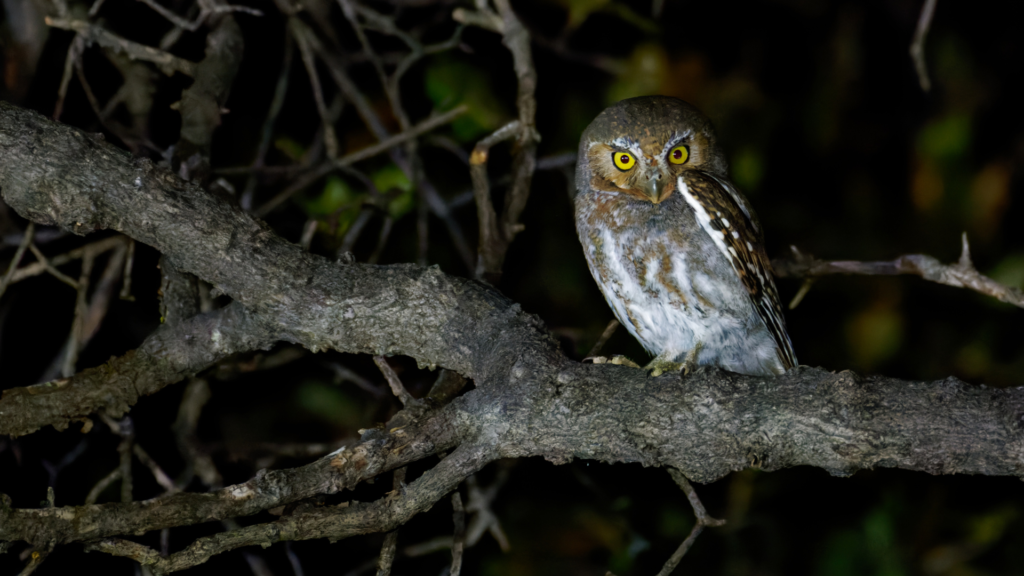
Snowy Owl:
This large owl, draped in snowy white feathers, is a sight to behold, particularly for those in the Arctic regions.
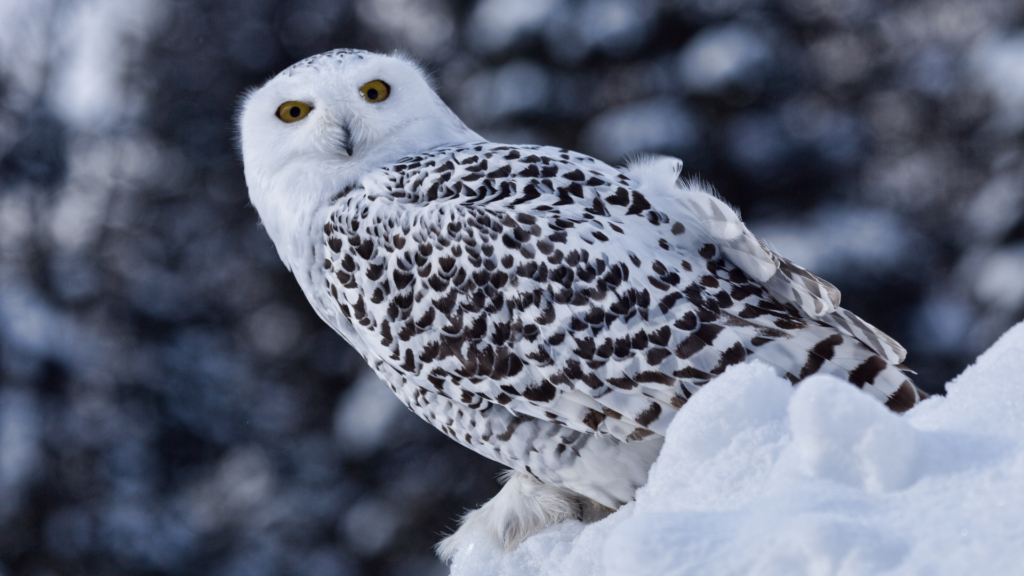
Barn Owl:
Barn Owl: Easily identifiable by its heart-shaped facial disk and eerie screeches.
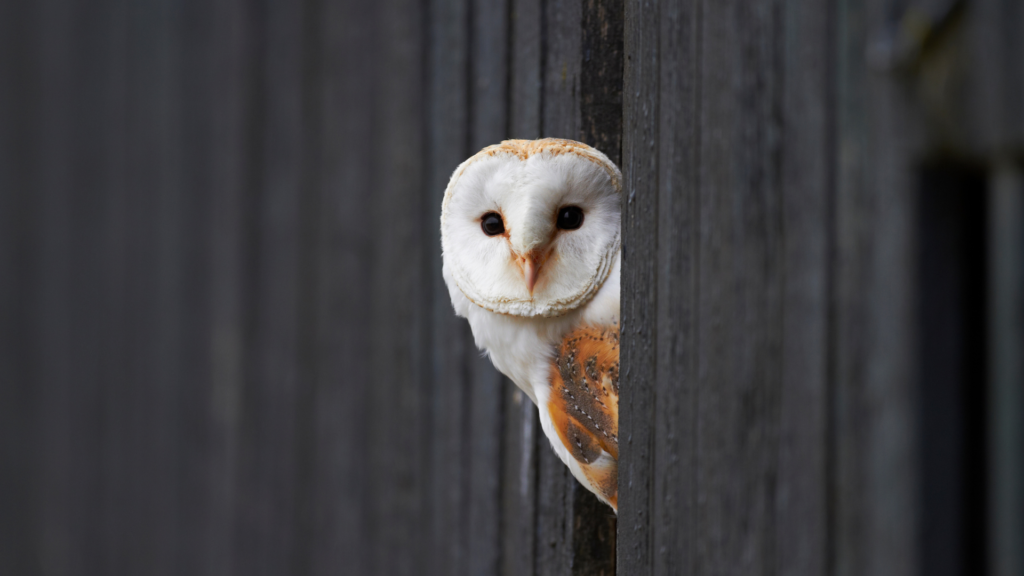
Each species brings its own unique characteristics and adaptations, fitting snugly into a niche in its respective environment. The immense variety showcases nature’s creativity and adaptability.
Unique Adaptations for Nocturnal Living
Owls are quintessential night predators, masters of the dark. Let’s delve into some of their remarkable adaptations:
‘Owls have evolved to be masters of the night, adapting to their environments in remarkable ways.’
– Bird Behavior Expert
- Exceptional Vision: Their large eyes, adapted for low light, provide stellar night vision. Interestingly, owl eyes are so big that they are immobile, and these birds have to move their entire head to change their field of view.
- Enhanced Hearing: An owl’s ears are asymmetrically placed, allowing them to pinpoint the exact location of prey, even under foliage or snow.
- Silent Flight: Thanks to specialized feathers that reduce turbulence and muffle the sound of their wings, owls can approach prey silently.
These adaptations make owls formidable hunters of the night, silently swooping down on unsuspecting prey with precision and stealth.
Predators and Threats to Owlets and Eggs
While owls are formidable predators, they are not without their own threats, especially when they are young or still in the egg. Owlets and eggs can be vulnerable to predators like raccoons, snakes, and even other birds. For instance, crows are known to mob owls, particularly during the day when owls are less active. In some cases, crows and other birds might attack owl nests, targeting eggs or young owlets. However, adult owls are powerful defenders of their nests and will fiercely protect their young, often deterring potential predators with their sharp talons and aggressive behavior.
Life Spans: A Contrast Between Species
Life spans in the owl world can vary significantly:
- Smaller species, such as the elf owl, may only live for a few years, particularly in harsh environments where threats are plenty.
- Larger species, like the snowy owl, can live up to 30 years in captivity, given the right care and conditions.
Understanding these lifespans is crucial, as it helps conservationists and researchers create better strategies for preserving these magnificent creatures.
I saw a snowy owl on some show once and it felt like staring into the eyes of someone—wise, calm, and somehow otherworldly. This magnificent bird, with its ethereal presence, seemed to have stories of thousands of cold, moonlit nights. And knowing that some snowy owls can live up to three decades only deepened my respect for these profound, cosmic travelers.
So, what do you find most fascinating about owls? Their silent flight? Their dazzling array of species? Or perhaps their nocturnal mysteries? For me, it’s this blend of awe-inspiring attributes that makes them truly enigmatic and worthy of admiration. Please leave your thoughts in the comments below, as I’d love to hear what captivates you about owls!
Silent Predators: The Art of Hunting
There’s something undeniably magical about owls, isn’t there? These enigmatic night dwellers have fascinated humanity for centuries, and it’s easy to see why. The way they glide effortlessly through the darkness, almost as if they’re phantoms—it’s like witnessing a secret dance orchestrated by Mother Nature herself. What gives them this almost supernatural ability to move so silently, you ask? Let me take you on a journey to uncover the mysteries behind their stealth.
How Silent Flight is Achieved
Imagine being able to move through the night without making a sound, your very presence undetectable. Owls, the quintessential silent predators, have mastered this art thanks to their remarkable evolutionary adaptations. The trick lies in their feathers—specially designed by nature to muffle the sounds of flight. These feathers have serrated edges that break up the turbulence, reducing noise as they slice through the air.
It’s akin to cutting through water with a razor blade; the disturbance is minimal, almost nonexistent. This unique adaptation is crucial for hunting in the dark, allowing them to close in on prey without giving themselves away. I remember reading that specialized feathers can reduce noise by as much as 20 decibels! That’s akin to whispering in a library as opposed to talking normally. Can you picture that?

The Role of Specialized Feathers
But there’s more to it than just serrated edges. Owl feathers are also soft and velvety, absorbing the sound that would usually bounce off harder surfaces. This extraordinary feature allows them to fly past a rustling leaf or a twig snapping underfoot without an audible trace. While most birds rely on speed and agility, owls depend on the element of surprise, and their feather construction plays an indispensable role in this strategy.
‘The silence of an owl in flight is nature’s best-kept secret.’ – Wildlife Photographer
These silent flights aren’t just tactics for evading detection; they are essential for the actual hunt. According to studies, owls can hear a mouse squeak from over 100 meters away in complete darkness. That’s like hearing a pin drop in a bustling city—truly phenomenal. Their feathers don’t just aid in silence but also enable swift, agile movements, making them efficient hunters even in complex environments.
Hunting Techniques that Set Owls Apart
From my observations, owls exhibit some of the most diverse and effective hunting techniques in the avian world. They can be both patient and opportunistic. Some, like the Great Horned Owl, prefer to perch silently, scanning their surroundings with sharp, watchful eyes. They wait for the unsuspecting prey to wander into their reach before pouncing with deadly accuracy.
Others, such as the Barn Owl, employ a different tactic. These owls glide silently over open fields, using their acute hearing to detect the faintest movements below. The ability to locate prey through sound alone is mind-blowing! Even under a blanket of snow or a thick layer of foliage, an owl can zero in on its prey with remarkable precision.
Imagine the level of concentration and skill involved—like a solo pianist playing a complicated piece flawlessly in the dark. It’s an awe-inspiring feat of nature that compels me to see these birds not just as hunters but as artists in their own right. They showcase nature’s perfect blend of form and function, merging silence, precision, and deadly efficiency into a single creature.
One cannot help but feel a sense of reverence when delving into the lives of these magnificent predators. Their unique adaptations and unparalleled hunting skills symbolize a kind of purity and mastery that is both humbling and inspiring. Reflecting on their silent flights and piercing calls reminds us of nature’s delicate balance, urging us to cherish and protect these extraordinary beings.
Next time you hear the soft rustle of wings in the night, remember: you’re in the presence of a true master of the art of hunting.
Breeding Rituals: The Heart of Owl Families
Isn’t there something truly magical about owls? As the silent sentinels of the night, they’ve always intrigued me with their mysterious aura and nocturnal habits. Their breeding rituals, in particular, are a beautiful dance of nature, filled with elaborate courtship, nurturing, and the journey from egg to young fledgling. Let’s dive deep into the heart of owl families and explore what makes their breeding so fascinating.
Elaborate Courtship Displays
During the breeding season, male owls engage in remarkable courtship displays that could put any romantic gesture to shame. Picture this: a male owl, keen on proving his worth, presents a freshly caught prey to a potential mate. It’s his way of saying, “Look, I can be a great provider for our future family.” This ritual, often involving food offerings, is not just a demonstration of prowess but also a bond-building moment.
‘Parenting among owls is as vital as it is intricate, reflecting the delicate balance of nature.’ – Ornithologist
Food exchanges are accompanied by a series of mesmerizing calls and flights. It’s almost as if the male is serenading his chosen one under the moonlit sky. These displays of affection are vital, as they lay the foundation of trust and partnership, ensuring that both the male and female are committed to the arduous journey of raising their young.
Nesting Habits and Egg Clutches
When it comes to nesting, owls are incredibly versatile. Their adaptive nature allows them to choose various nesting sites – from tree hollows to cliff ledges, and even abandoned buildings in our urban jungles. Each choice of nesting site reflects the species’ unique adaptation to its environment.
Once the perfect nesting spot is selected, the female owl lays her eggs. Typically, an owl clutch comprises anywhere from one to several eggs, depending on the species and environmental conditions. These eggs then undergo an incubation period that usually lasts several weeks. During this time, the male often takes on the role of the provider, bringing food to the nesting female.
Here’s an interesting tidbit: Did you know that owl incubation strategies are staggered? This means that the eggs don’t hatch all at once. Instead, they hatch sequentially, ensuring that not all offspring demand intense care simultaneously. This method increases the survival chances of the young, especially in challenging conditions.
Timeline from Hatching to Flight
Once the eggs hatch, the owlets begin a fascinating journey of growth and development. For the first few weeks, they are entirely dependent on their parents for food and protection. Around 4-6 weeks of age, the owlets start to explore the world outside their nest, a stage known as “branching,” where they learn to climb and practice flapping their wings. By 8-10 weeks, they begin to fly short distances but continue to rely on their parents for food and guidance. It’s typically not until they are around 10-12 weeks old that they fully leave the nest and start hunting independently. Thi
The Nurturing Journey from Owlet to Fledgling
Once the eggs hatch, the real challenge begins. Owlets are initially helpless, blind, and entirely dependent on their parents. This period is an intense time of nurturing and teaching. The parents, particularly the female, showcase remarkable patience and dedication as they feed, protect, and train their young.
Watching an owlet grow is uniquely captivating. Over weeks and months, these fledgling owls gradually develop their hunting skills, often under the watchful eyes of their parents. Imagine the tiny, curious owlet taking its first tentative steps out of the nest, or flapping its wings in its first attempts at flight. It’s a testament to the resilience and adaptability of these birds.
The duration from hatching to fledging varies widely among species. In some species, young owls may be ready to fledge in a few weeks, while in others, it can take several months. During this time, the parent owls remain vigilant, guiding their young ones in the art of survival, from perfecting their silent flight to mastering the hunt.
The journey of an owl family, from courtship through to fledging, is a remarkable narrative of dedication, patience, and unwavering commitment. I often find myself in awe of the intricate dances and rituals that punctuate their lives. It paints a vivid picture of the delicate balance of nature and the profound ways these magnificent birds adapt and thrive in a variety of environments. Their breeding rituals serve as a poignant reminder of nature’s wonders and the intricate threads that make up the tapestry of wildlife.
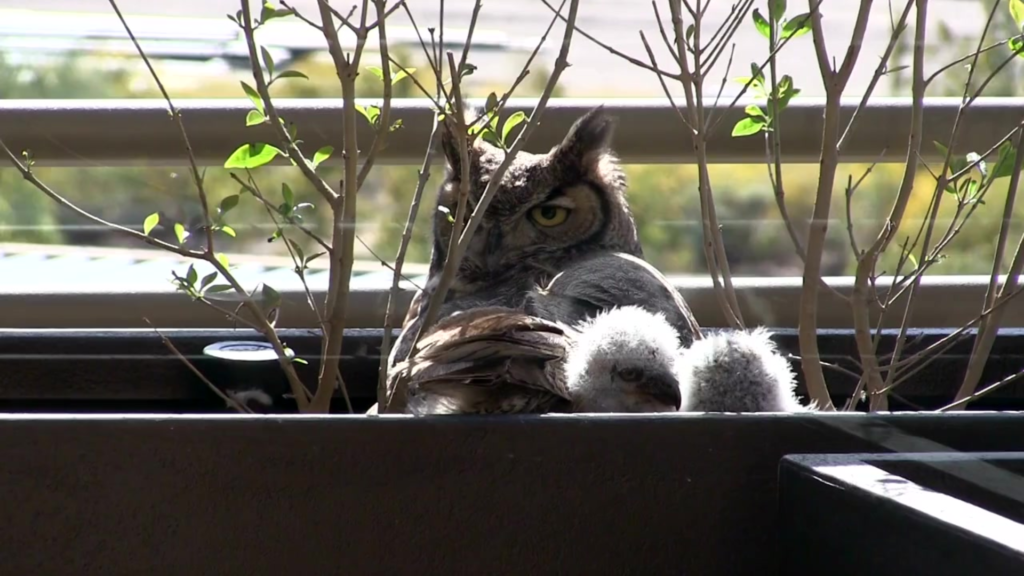

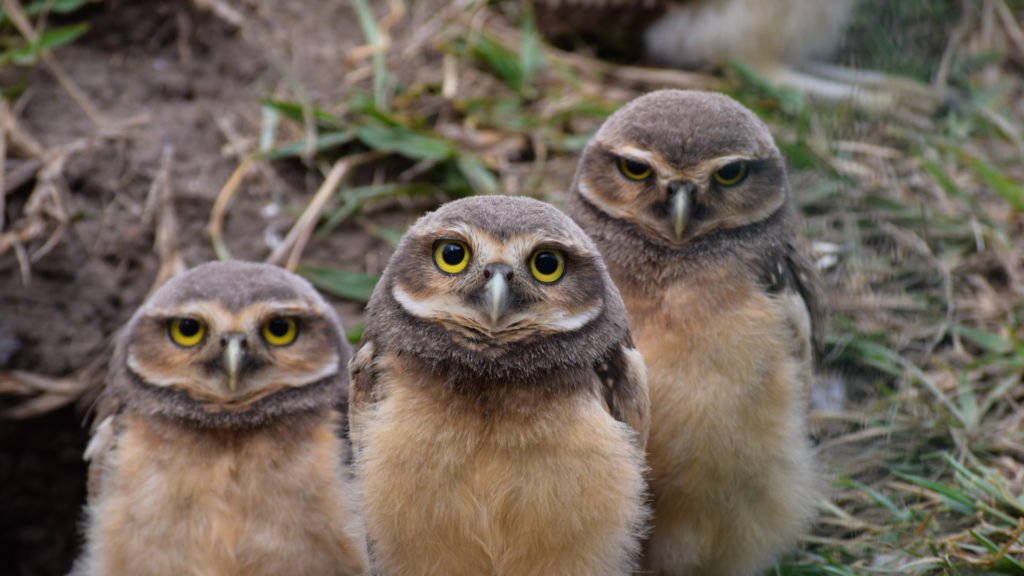
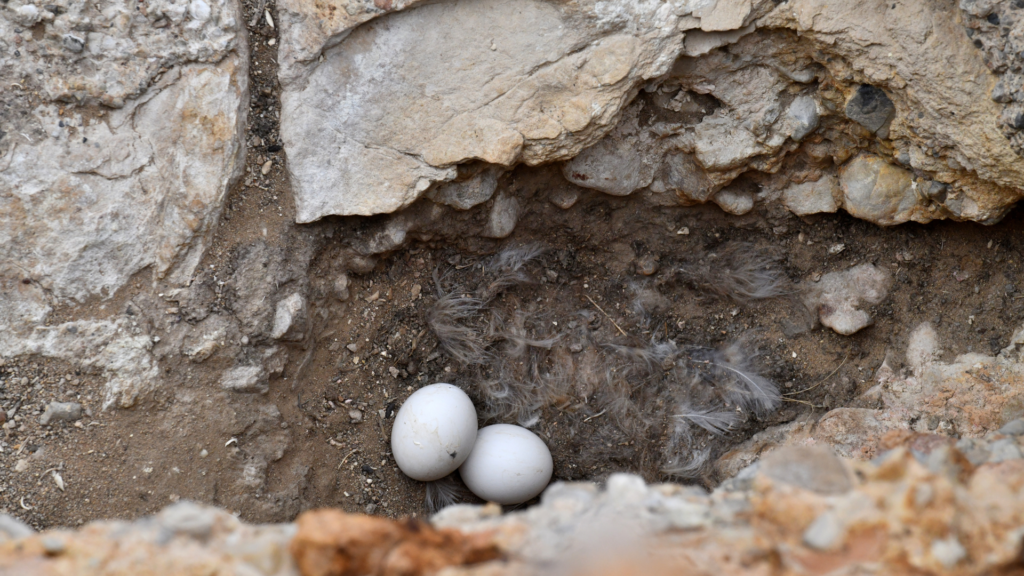
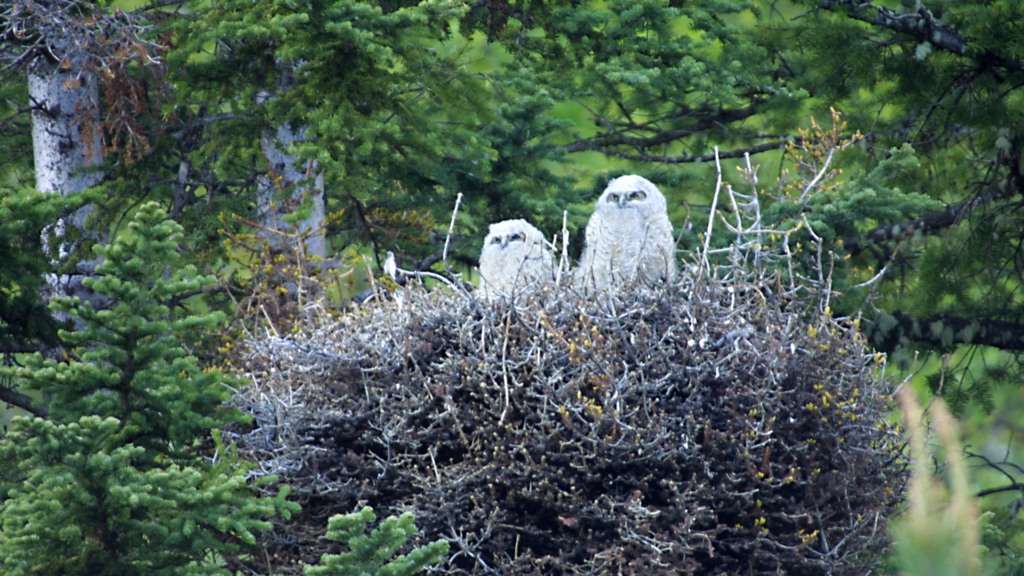
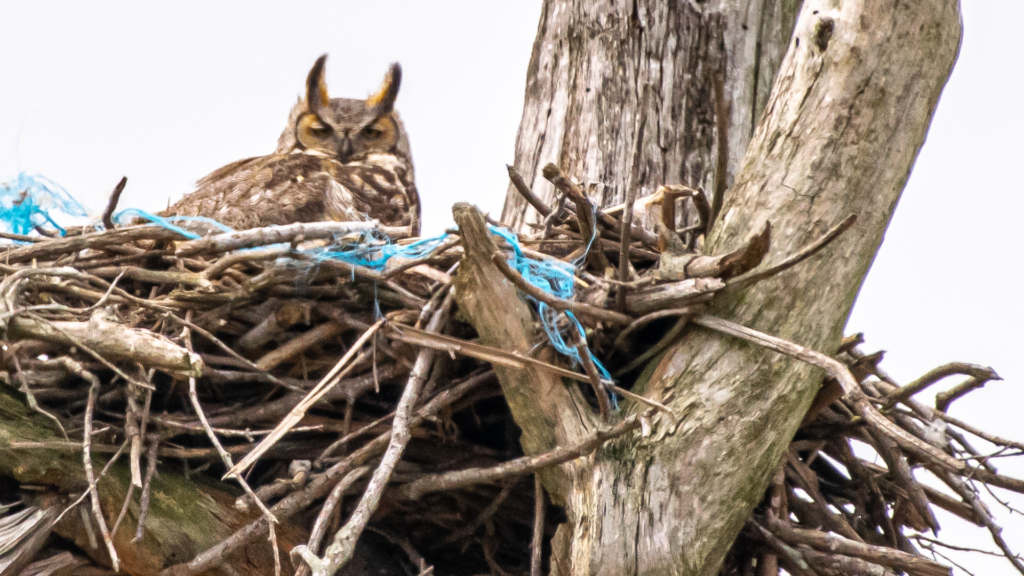
As I ponder these incredible aspects of owl life, I’m reminded of our own responsibilities towards preserving the delicate balance of nature. The world of owls, with its profound rituals and nurturing dynamics, inspires us to cherish and protect the natural world around us.
The Sound of the Night: Owl Vocalizations
Ever sat under a starlit sky and heard the haunting hoot of an owl echoing through the stillness? There’s something almost magical about these sounds piercing the tranquility of the night. As someone who has always been mesmerized by these nocturnal creatures, I’d like to share with you some fascinating insights into the world of owl vocalizations.
Sounds made by owlets and adult owls
Owls are vocal creatures, and their sounds vary greatly depending on their age and the situation. When owlets first hatch, they make soft, high-pitched peeping sounds to communicate with their parents. As they grow and become hungrier, these calls turn into louder begging calls, especially as they near feeding times. Adult owls, depending on the species, have a wide range of vocalizations, from the iconic hoots to screeches, hisses, and even whistles. During flight, owls are remarkably silent, but they may still produce faint sounds or vocalize if communicating with a mate. During fights or when feeling threatened, owls can click their beaks or emit aggressive screeches.
Distinctive Hooting Patterns
Owls are the true maestros of the night, each with their own unique soundtrack. Their hooting patterns are not random; they serve as a signature tune, much like a personal ringtone. Each species of owl boasts its own distinct hoots and calls. It’s their way of saying, ‘I’m here, this is my ground, and I am not to be messed with.’
Consider the Great Horned Owl, whose deep, staccato hoots are both eerie and commanding. And then there’s the Barn Owl, which eschews traditional hoots for screeches and hisses, creating a symphony that’s uniquely theirs. The vocal range of owls is as diverse as the landscapes they inhabit, from dense forests to open prairies.
Communication and Territory Establishment
One of the most fascinating aspects of owl vocalizations is their role in communication. Picture this: it’s a moonlit night, and a male owl begins his series of hoots. He’s not just making noise; he’s sending a clear message. These vocalizations establish territory, warding off potential intruders and asserting dominance over a given area. It’s nature’s way of maintaining harmony and order in the wild.
But it isn’t just about staking a claim. During the breeding season, the stakes are much higher. Male owls hoot to attract females, their calls becoming both love songs and an announcement of readiness. It’s a poignant reminder of how life in the wild balances survival and connection, even in the darkest hours.
‘The vocalizations of owls are a blend of song and survival; it’s how they navigate their world.’
– Sound Ecologist
Variation Among Different Owl Species
Not all owls communicate in the same way. The diversity in their vocalizations is truly astounding. Spanning over 200 species globally, each one has developed unique calls tailored to their environment and social structure. For example, the Eastern Screech-Owl’s trill contrasts sharply with the Barred Owl’s repeating hoots, each adaptation serving a specific purpose.
Even among species that do vocalize similarly, subtle differences abound. These variations help owls recognize one another, a critical feature for avoiding conflicts and finding potential mates. It’s like having a conversation where each party speaks slightly different dialects but understands each other perfectly.
Fascinating Facts About Owl Vocalizations
- Each owl species has its own unique hooting patterns.
- Male owls hoot to attract females during the mating season.
Consider the data on owl vocalizations. Every owl species is equipped with a unique pattern, almost like a fingerprint that sets them apart in the vast orchestra of nocturnal sounds. During the mating season, these calls become even more pronounced as males seek to attract females, bolstering their calls with intensity and frequency.
As I sit here, reflecting on the awe-inspiring nature of owl vocalizations, it’s clear that these calls are more than just sounds. They represent a complex system of communication that ensures their survival and continuity. Whether it’s the territorial claims echoing through the night or the tender calls uniting mates, owls remind us of the intricate beauty of the natural world.
So next time you hear an owl’s call, take a moment to appreciate the profound significance behind those eerie hoots. It’s a glimpse into their world, a world where every sound matters and every call tells a story.
Conservation: Protecting Our Nocturnal Neighbors
Ever wondered what makes owls such enchanting creatures of the night? These fascinating beings have captivated human imagination for centuries with their mysterious habits and incredible adaptations. Join me as we delve into the significance of owls, the threats they face from habitat loss, and how we can contribute to their preservation.
The Ecological Significance of Owls
Owls, with their distinct round faces and sharp talons, are superbly adapted predators that inhabit a wide range of habitats across the globe. These birds are masters of silent flight, thanks to specialized feathers that muffle the sound of their movement through the air. Did you know there are over two hundred species of owls worldwide? While lifespans vary, many owls can live well over ten years in the wild. Some larger species, like the snowy owl, have been known to live up to thirty years in captivity with proper care.
Owls play a crucial role in their ecosystems as efficient hunters, helping to control the populations of rodents and other small animals. Their keen eyesight and acute hearing make them formidable predators, capable of pinpointing prey in near darkness. This balance is essential for maintaining healthy ecosystems. Without owls, the population of small animals like rodents would become unmanageable, leading to a cascade of ecological imbalances.
‘Conservation is not a luxury; it’s a necessity for the survival of species like owls.’
– Conservation Biologist
Threats from Habitat Loss
Unfortunately, many owl species are threatened due to habitat loss and environmental changes caused by urbanization and agricultural expansion. These activities dramatically reduce the natural habitats that owls depend on for nesting and hunting. For instance, the deforestation for agriculture in tropical regions has had a detrimental impact on species like the spotted owl, which relies on old-growth forests for survival.
In urban areas, light pollution and the lack of suitable nesting sites pose additional challenges. Imagine an owl trying to hunt in a brightly lit city—its night vision, a critical adaptation for survival, becomes almost useless. These changes not only lead to reduced owl populations but also affect the broader ecosystem balance they help maintain.
How We Can Contribute to Their Preservation
So what can we do to ensure the survival of these stunning nocturnal neighbors? One way to make a difference is by supporting local conservation efforts. Engaging in habitat restoration projects, such as planting native trees and preserving old-growth forests, can provide owls with the safe havens they need.
Another crucial step is advocating for policies that protect natural habitats from excessive development. By raising awareness about the importance of owls and other wildlife, we can influence community planning and decision-making processes. For instance, community programs that encourage the installation of owl boxes can provide essential nesting sites in areas impacted by urban sprawl.
Even small changes in our daily lives can make a significant impact. Reducing light pollution by using outdoor lighting fixtures that minimize upward light spill can help maintain the natural darkness that owls require. Educating our friends and families about the importance of owls and the simple steps we can take to help can spark a ripple effect of conservation efforts.
I believe that by coming together and taking these proactive steps, we can help ensure that our nocturnal neighbors continue to thrive. The delicate balance of our ecosystems depends on the survival of species like owls—creatures of the night who silently remind us of nature’s profound beauty and our responsibility to protect it. Let’s make a commitment to owl conservation and be the guardians of their enchanting world.
About Owls
- Habitat: Forest, Grasslands, Deserts, Urban
- Animal Classification: Birds
- Species Family: Strigidae (true owl family), Tytonidae (barn owl family)
- Region: Worldwide
- Conservation Status: Varies by species (some are Least Concern, others Vulnerable or Endangered)
- Characteristics/Behaviors: Carnivorous, Nocturnal, Silent Flight, Solitary, Predatory
TL;DR: Owls play a vital role in controlling small animal populations and maintaining ecosystem balance. They face significant threats from habitat loss due to urbanization and agriculture. You can aid their conservation by supporting local habitat restoration projects, advocating for protective policies, reducing light pollution, and spreading awareness about their importance.
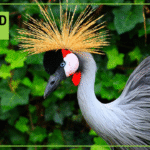




Leave a Reply